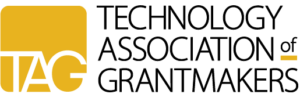By Jason Chong, CIO, Clark Nuber
Integrating Strategy and Technology
In today’s mission-driven environment, your overall strategic and technology plans must work together to ensure overall success. Technology is no longer just a support function; it can be and should be a strategic accelerator if your organization properly aligns both plans. Compared to revenue-generating parts of a business, technology is often seen as an expense on the financials. However, to truly move your organization forward into this fast-paced technology-driven world, technology must be seen as a value-generator, helping drive innovation and business agility.
Intentional Technology Investment
We’re all investing in technology, cloud services, collaboration tools, cybersecurity, and AI. Yet what sets organizations apart, or ahead, is investing intentionally. Having a clear plan for how technology will help drive your organization’s goals, a strategy and process to ensure you’re getting the right tools and receiving proper implementation (the first time), and steps in place to continually reassess as technology changes will ensure your organization adapts successfully.
Balancing Speed, Stability, Cost, and Security
Modern technology planning and purchasing is a balancing act between speed, stability (reliability), cost, and, now more important than ever, security. You can optimize a couple of these to reduce costs, but the other may be impacted. For example, high- performing, reliable, and secure systems come at a premium, but they pay off reduced downtime, higher productivity, improved employee satisfaction, and more enterprise-grade security features.
Cutting corners on technology may save money upfront, but the long- term costs of support tickets, lost productivity, loss of data, frustrated teams, and even staff turnover can far outweigh the initial savings.
From Budgeting to Strategic Planning
Having a technology budget isn’t enough anymore. What you need is a technology investment plan that aligns with your long-term organizational goals. Budgets may fluctuate but plans are anchored in purpose. A thoughtful plan enables smarter decisions—even in times of financial constraint—without undermining core mission capabilities.
ROI vs Benchmarking
Traditionally, to get leadership buy-in, return on investment (ROI) is a common place to start a purchasing discussion. Many vendors now publish “their” ROI calculator, but the returns are usually elevated past what a normal customer would realize once the technology has been installed/implemented. Traditional ROI doesn’t capture intangible outcomes like staff empowerment, improved user experience, or time saved through automation. These are slightly harder to quantify but just as critical.
A better and proven approach is to benchmark against industry peers. Find out what top-performing organizations in your industry are spending on technology and aim to invest slightly more to stay ahead of the curve. If you treat technology as a strategic differentiator, you’ll find ways to turn it into a competitive edge.
Next Steps
To get started, a comprehensive assessment should be conducted to establish the current state of technology within the organization. Encourage your organization to:
– A complete inventory of all hardware, software, and web applications in use.
– A risk register based on the technologies and data managed by the organization.
– Engage in strategic discussions with the executive leadership team to understand their business objectives and articulate how technology can align to help achieve them.
Without these foundational elements, any subsequent planning efforts risk being inefficient and potentially counterproductive, resulting in wasted time, resources, and financial investment, which is ultimately a detriment to all stakeholders involved.
Written by Jason Chong, Chief Information Officer at Clark Nuber, P.S., who has over 18 years of industry experience.
Clark Nuber PS is an award-winning CPA firm located in the Seattle area. Recognized as a Top 100 Firm by both Inside Public Accounting and Accounting Today, our 300+ professionals provide audit, accounting, tax, and consulting services to private companies, family businesses, not-for-profit organizations and the public sector, foundations, and high net worth individuals. In addition to the Pacific Northwest, Clark Nuber serves clients throughout the United States and around the world.
This article is sponsored content provided by the above mentioned organization. The views and opinions expressed are those of the author and do not necessarily reflect those of TAG. To learn more about our approach to sponsored content and partnership opportunities, please contact us.
